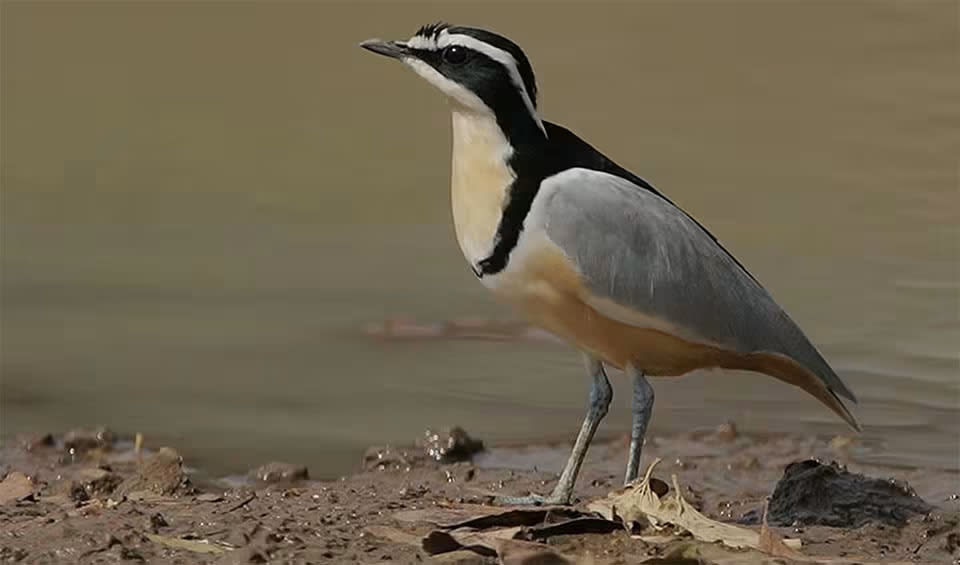This bird, a wader found in parts of Sub-Saharan Africa, is notably linked with ancient stories suggesting a symbiotic relationship with crocodiles, where it was said to clean the reptiles’ mouths, a behavior that has not been scientifically verified in modern times but contributes to the bird’s mystique.
The Egyptian Plover is a striking bird with a distinct appearance. Adults range from 19 to 21 centimeters in length and exhibit a bold pattern of contrasting colors: a black crown, back, eye mask, and breast band stand out against the white that covers the rest of the head. The blue-grey plumage on the upper parts and the vibrant orange underparts add to its distinctive look, making it easily identifiable. Their blue-grey legs are not just for wading but are also long and slender, facilitating swift movement along the sandy riverbanks where they typically feed.
Typically found near bodies of water such as rivers and lakes, the Egyptian Plover prefers sandy beaches or areas with exposed rocks where it can forage for food. Its diet consists mainly of insects, which it catches by deftly pecking with its sharp bill. The bird’s foraging technique involves running short distances before pausing to look for prey, a behavior characteristic of plovers in general.
These birds are also known for their intriguing breeding behaviors. They nest on open ground, often near water, where they lay their eggs in a simple scrape in the sand. Both parents are involved in incubating the eggs and caring for the chicks, which are precocial and able to leave the nest soon after hatching.
Distribution
 Angola
Angola Benin
Benin Burkina Faso
Burkina Faso Burundi
Burundi Cameroon
Cameroon Central Af. Rep.
Central Af. Rep. Chad
Chad Congo-Brazzaville
Congo-Brazzaville Côte D’ivoire
Côte D’ivoire DR Congo (Kinshasa)
DR Congo (Kinshasa) Egypt
Egypt Equatorial Guinea
Equatorial Guinea Eritrea
Eritrea Ethiopia
Ethiopia Gambia
Gambia Ghana
Ghana Guinea-Bissau
Guinea-Bissau Guinea
Guinea Kenya
Kenya Liberia
Liberia Libya
Libya Mali
Mali Mauritania
Mauritania Niger
Niger Nigeria
Nigeria Senegal
Senegal Sierra Leone
Sierra Leone South Sudan
South Sudan Sudan
Sudan Togo
Togo Uganda
UgandaAnything we've missed?
Help us improve this page by suggesting edits. Glory never dies!
Suggest an editGet to know me
Terrestrial / Aquatic
Altricial / Precocial
Polygamous / Monogamous
Dimorphic / Monomorphic (size)
Active: Diurnal / Nocturnal
Social behavior: Solitary / Pack / Herd / Flock
Diet: Carnivore / Herbivore / Omnivore / Piscivorous / Insectivore
Migratory: Yes / No
Domesticated: Yes / No
Dangerous: Yes / No




